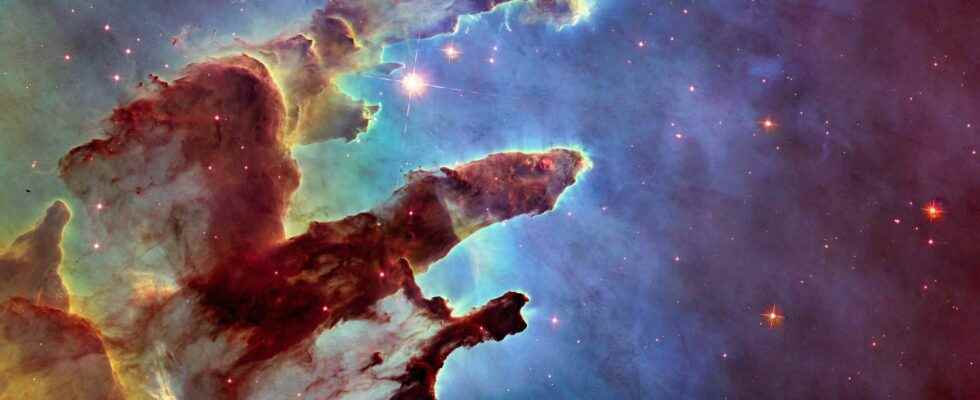Humanity is about to marvel at the next spectacle offered by the James-Webb telescope, this is essentially what astronomy experts unanimously predict. The largest space observatory ever built will provide its first images soon. No doubt they will be emotionally accompanied by an intense “Wow”.
You will also be interested
[EN VIDÉO] Understand the James Webb Space Telescope mission in one minute The James Webb Space Telescope, a new flagship in space observation, will be launched on December 18 from Kourou, Guyana. After a 29-day journey, it will reach the Lagrange point L2, in the opposite direction to the Sun. With its mirror larger than that of Hubble, of which it is considered the successor, the JWST will be able to observe galaxies, planets, nebulae and stars to learn more about the history of the Universe.
The Nasa announces that the first images and spectroscopic data of the James Webb Space Telescope will be released on July 12. Unsurprisingly, its first images are expected to be spectacular. But above all, they will have to surpass, at the technical, scientific and artistic level, the most beautiful images ofHubble that have amazed us for more than 30 years.
As the largest, most complex and expensive space observatory ever launched into space, James-Webb went through a six-month preparation period before it could begin scientific operations, calibrating its four instruments at its spatial environment and aligning its mirrors. This painstaking process resulted in the first images and data, demonstrating the power of the telescope and its 6.5 meter mirror unveiled theuniverse infrared.
There ” publication of the first images in color of Webb will provide a once-in-a-lifetime moment for all of us to stop and marvel at a sight mankind has never seen before. said Eric Smith, Webb program scientist. And to add these images will be the culmination of decades of dedication, talent and dreams — but they will also only be the beginning “. In terms of teasing, we can’t do better!
An expected “wow”
More seriously, and as NASA points out, this “ For five years now, the JWST scientific team has been working and thinking about what will be the first targets of this observatory “, whose astronomical costs are around 10 billion dollars. At this price, the American, Canadian and European citizens who financed it expect data which will “revolutionize” the observation of the sky in the infrared.
If we expect these first images to be of great artistic interest, they should also delight astronomers professionals and highlight the tremendous technological performance of the instruments on board the satellite. They should also provide insight into what to expect for users of James-Webb data. As soon as the observatory is operational and its instruments properly calibrated, the James-Webb telescope will observe, one by one, a list of targets that have been pre-selected and ranked in order of priority by an international committee.
Interested in what you just read?
